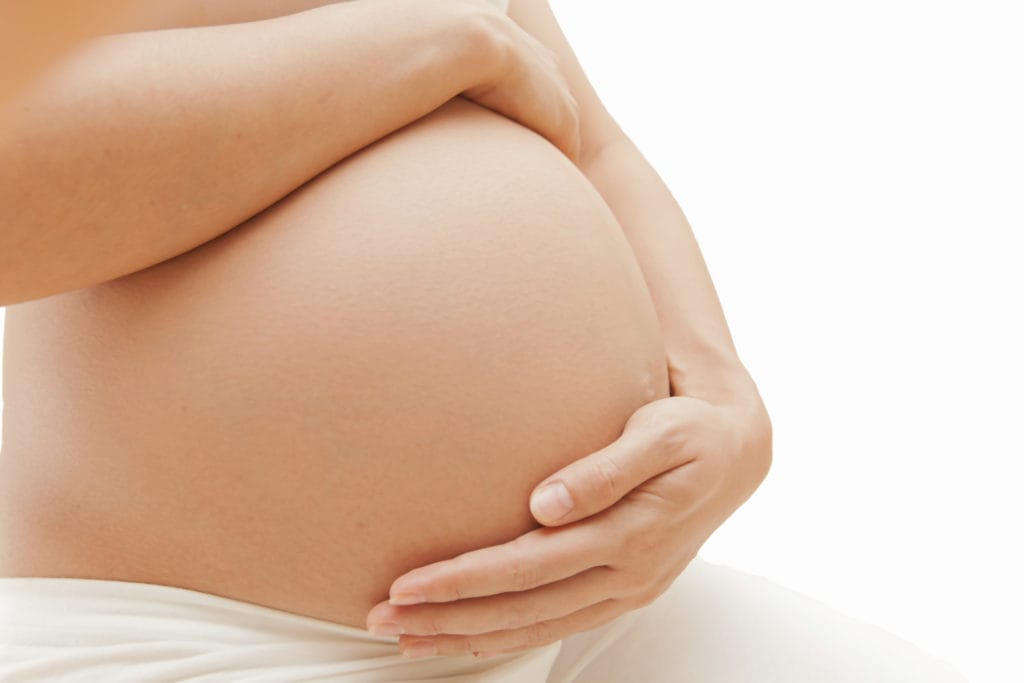By Jeanene Swanson — The use and misuse of prescription opioids by pregnant women has increased from 1.2 per 1,000 hospital live births in 2000 to 5.6 in 2009 in the last 10 years. What’s even more unsettling is that even in light of these statistics, several recent studies have found that doctors are prescribing opioid analgesics to their pregnant patients in growing numbers. Two studies published this spring found an astonishing increase in prescription opioid use by pregnant women. (Common opioid analgesics include codeine, hydrocodone and oxycodone.) Of 1.1 million pregnant women on Medicaid, nearly 23 percent filled an opioid prescription in 2007, up from 18.5 percent in 2000, according to a study led by Rishi Desai of Brigham and Women’s Hospital and Harvard Medical School. Another study, led by Harvard’s Brian Bateman, found that among privately insured pregnant women, 14 percent filled a prescription for opioids—and, only about 10 percent of those were for pain management after surgery or those who were addicted to opioids before they became pregnant. Pain, sometimes severe, is a reality for many women during pregnancy. Weight gain, changes in posture, relaxation of ligaments from hormonal fluctuations and pelvic floor dysfunction can all cause pain. “Pregnancy is one of the conditions in which pain complaints are fairly common, especially back pain and abdominal pain,” Desai says. “So my best guess is, that’s why the women in our cohort were receiving [opioid analgesics prescriptions].” However, the majority of the indications for opioid treatment in the Bateman cohort were back pain, abdominal pain, migraine, joint pain and fibromyalgia, all of which are not particularly responsive to opioids and can (and should) be treated with other drugs, including nonsteroidal anti-inflammatory medications, physical therapy, yoga and psychological treatments.
Prescription Medications and Birth Defects
Opioid use during pregnancy (being addicted to heroin, for instance) is associated with premature delivery, low birth weight, neonatal withdrawal syndrome and birth defects. The Centers for Disease Control and Prevention’s Cheryl Broussard led a study published in 2011 examining the effects of opioid pain medications on pregnancy. The study found that “treatment with opioid analgesics in early pregnancy was linked with several types of congenital heart defects, spina bifida (a neural tube defect), hydrocephaly, glaucoma and gastroschisis (a defect of the belly wall).” The number of babies with these defects made up 3 percent of about 20,000 births. Researchers from Boston University and the CDC found in a 2013 study that mothers who used opioids in the first two months of pregnancy were two times more likely to have a pregnancy affected by a neural tube defect than women who didn’t use opioids during pregnancy. Use of prescription medications—and not just opioid analgesics—during pregnancy has skyrocketed; the CDC estimates that today, nine out of 10 women in the U.S. take at least one medication while pregnant. According to the Slone Epidemiology Center Birth Defects Study (1976 to 2008) and the National Birth Defects Prevention Study (1997 to 2003), which together interviewed over 30,000 pregnant women about their medication use:
- Over the last three decades, first trimester use of prescription medication increased by over 60 percent.
- Use of four or more medications more than tripled.
- Some of the most commonly used medications during the first trimester are amoxicillin (for infections), progesterone, albuterol (for asthma), and promethazine (for allergies or nausea and vomiting).
Some reasons doctors might be prescribing more pain medications may be “increased awareness of pain control need over the years, changes in physician practice patterns, [or] changes in the prevalence of the underlying pain conditions,” Desai said.
Treating Mothers, Treating Addicts
Hendree Jones runs a full-service clinic for pregnant addicts. “We are definitely seeing an increase [in addicted mothers],” Jones said, adding that one-third of her patients come in with an opioid addiction, and at least one-half to two-thirds of the women are addicted to prescription opioids. While neonatal abstinence syndrome is serious (the incidence increased from 1.2 to 3.4 per 1,000 hospital live births from 2000 to 2009), what many don’t know is that pregnant opiate addicts can carry healthy babies to term. “We believe that addiction is one part of a woman’s experience,” but not the entirety of it, Jones said. Because pregnant addicts often feel guilty and are stigmatized by healthcare providers, ideally, writes Jones in a recent paper she co-authored, “obstetrical care for pregnant women who use opioids should be provided in the context of comprehensive programs that include prenatal care, specialized drug addiction treatment, mental health care and health education.” Most pregnant women who use opioids in the United States are not enrolled in such programs. Opioid replacement therapy in the form of Suboxone (buprenorphine, a partial opioid agonist) is often better than leaving the addict to detox or worse, go back on the street looking for drugs. “In some cases, avoiding or stopping medication use during pregnancy may be more harmful than taking a medication,” Broussard said. In fact, writes Jones in her report, “research strongly supports maintaining pregnant women on opioid-agonist pharmacotherapy throughout pregnancy and the postpartum period. Medication-assisted withdrawal is associated with a high opioid relapse rate, and some evidence suggests increased fetal morbidity and mortality rates.” All medications have side effects and possible risks. “No medication that is prescribed during pregnancy is without risk,” Jones said. “Providers and patients have to have really informed conversations.” There might be more of a risk, especially when it comes to pregnant addicts, to not taking a medication. “It could impact eating, mobility and depression,” Jones said. “All of those things are risk factors” that could compromise a woman’s ability to deliver a healthy baby. Taking into account the unknowns, and then making an informed decision can go a long way toward helping addicts not only have healthy babies, but also become better parents.

